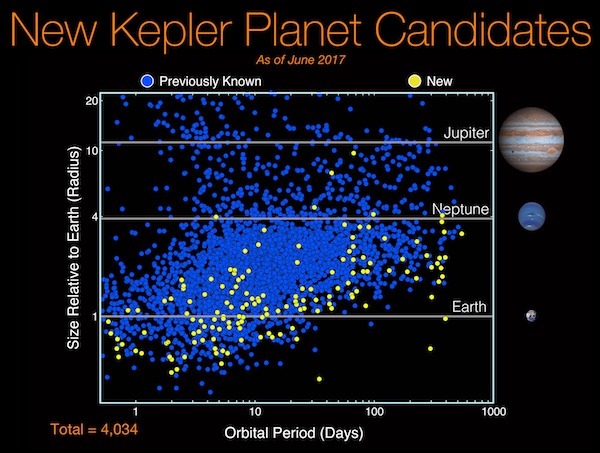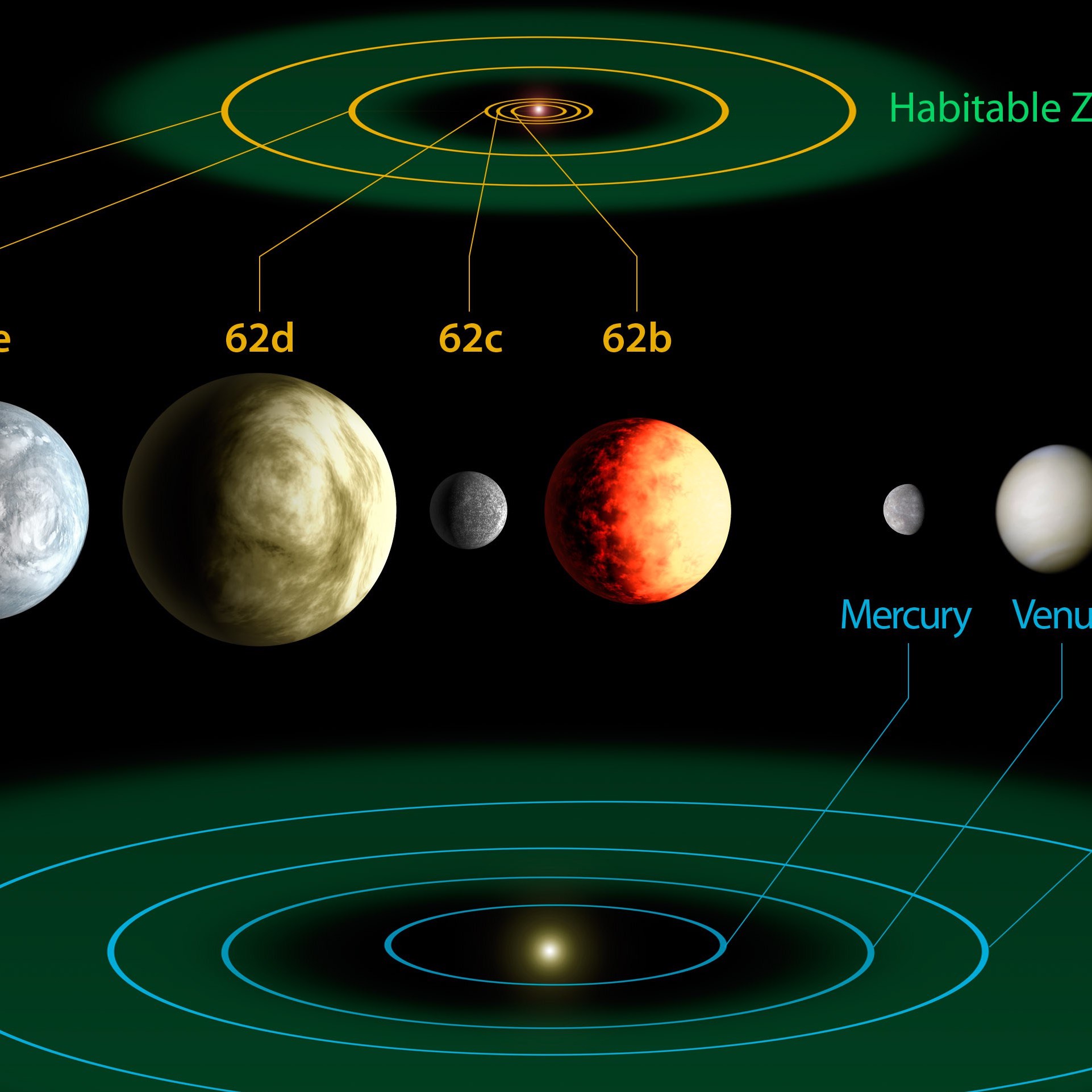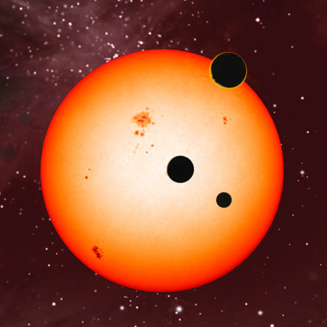
How Common Are Extrasolar Planets.
The Kepler instrument is a 0.95 meter aperture, optical (420 - 915 nm), space-based telescope that employed 42 CCDs to constantly observe 170,000 stars over a field of view (FOV) of 115 square degrees with a combined noise on 12th magnitude solar-type stars (inrinsic and instrument) of 30 ppm on a 6-hour time-scale. Kepler searches for the peri- odic drops in brightness which occur when planets transit their host star, thusly seeking to identify new extrasolar planets. The primary objective of the Kepler Mission is to determine the frequency of Earth-like planets around Solar-like stars.

Kepler Facts:
More than 21% of the planetary systems Kepler discovered show more than 1 transiting planet.
As of Feb 25/2018 there are 3704 confirmed planets using all techniques. Kepler discoveries account for 62%.
As of 1 June 2017, the distance to Kepler from Earth was about 137 million km or 91.7% of the Earth-Sun disance.
Here is a sample of some of the results from our research group.
Click on the images to make them bigger








Requests are Welcome
Kepler Transit Model Tables
Kepler Transit Timing Tables
Kepler Limb-darkening Measurements